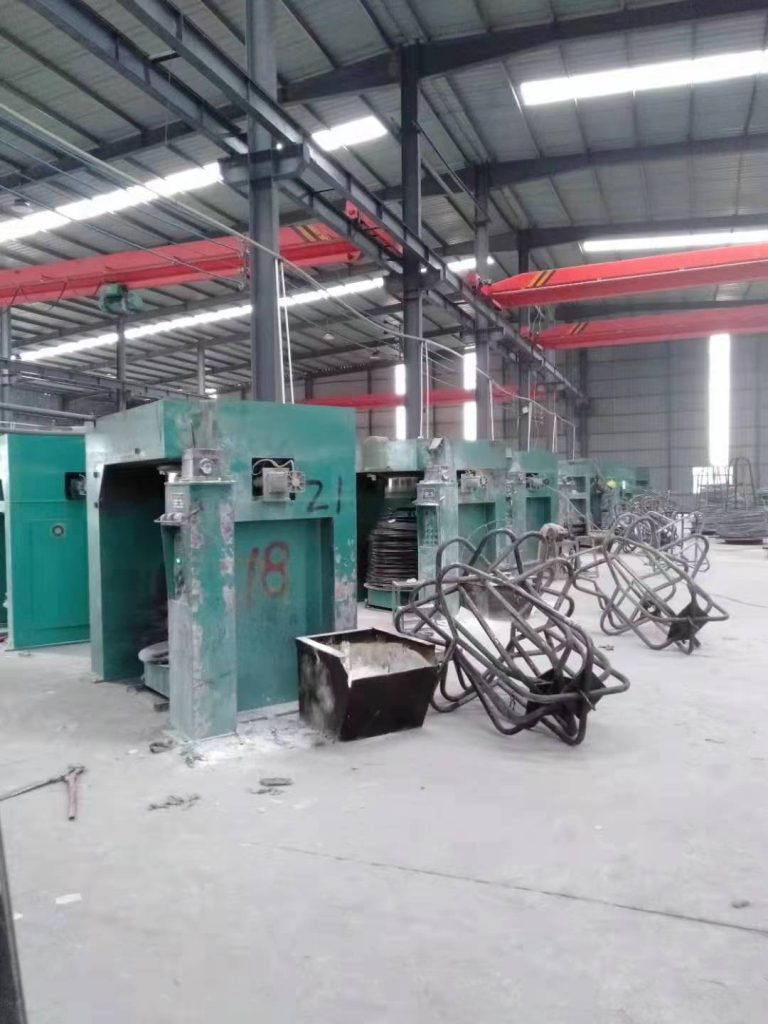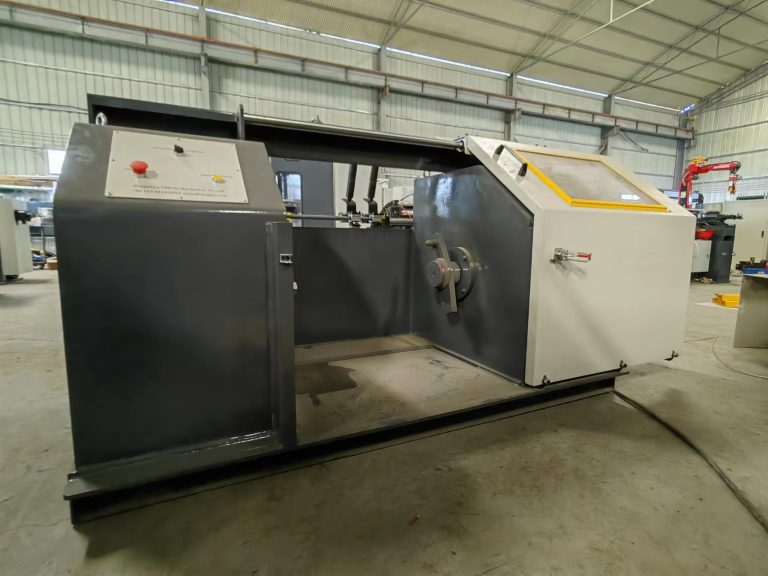Table of Contents
Undersanding of Single Draft Blocks With Bending Coiler
Single draft blocks with bending coiler are an essential tool in the manufacturing industry, particularly in the production of wire and cable. These innovative machines offer a range of benefits that can significantly improve efficiency and productivity in the manufacturing process.
One of the key advantages of using single draft blocks with bending coiler is their ability to produce high-quality wire and cable products. The precision and accuracy of these machines ensure that the final products meet the required specifications and standards. This is crucial in industries where quality control is paramount, such as in the aerospace and automotive sectors.

In addition to producing high-quality products, single draft blocks with bending coiler also offer increased production speed. These machines are designed to operate at high speeds, allowing manufacturers to produce more wire and cable in a shorter amount of time. This can lead to significant cost savings and improved profitability for businesses.
Furthermore, single draft blocks with bending coiler are versatile machines that can be used for a wide range of wire and cable products. Whether manufacturing thin gauge wire or thick cable, these machines can handle a variety of materials and sizes. This flexibility allows manufacturers to meet the diverse needs of their customers and expand their product offerings.
Another benefit of using single draft blocks with bending coiler is their durability and reliability. These machines are built to withstand the rigors of continuous operation, ensuring minimal downtime and maintenance. This reliability is essential for businesses looking to maximize their production output and meet tight deadlines.
Moreover, single draft blocks with bending coiler are easy to operate and require minimal training for operators. This can help businesses save time and resources on training programs, allowing them to focus on other aspects of their operations. Additionally, these machines are designed with safety features to protect operators and prevent accidents in the workplace.
Overall, the benefits of using single draft blocks with bending coiler are clear. From producing high-quality products to increasing production speed and versatility, these machines offer a range of advantages for manufacturers in the wire and cable industry. With their durability, reliability, and ease of operation, single draft blocks with bending coiler are a valuable investment for businesses looking to improve their manufacturing processes and stay ahead of the competition.
How to Properly Set Up and Maintain Single Draft Blocks with Bending Coiler
Single draft blocks with bending coilers are essential components in the textile industry, used to guide yarn through various stages of the production process. Properly setting up and maintaining these blocks is crucial to ensure smooth and efficient operation. In this article, we will discuss the steps involved in setting up single draft blocks with bending coilers, as well as provide tips for their maintenance.
When setting up single draft blocks with bending coilers, it is important to first ensure that the equipment is properly installed and aligned. This includes checking that the blocks are securely mounted and that the coilers are positioned correctly. Proper alignment is essential to prevent yarn breakage and ensure consistent tension throughout the production process.
Once the equipment is properly installed, the next step is to adjust the tension on the coilers. This can be done by adjusting the tension springs or by changing the position of the coiler arms. It is important to find the right balance of tension to prevent yarn breakage while still maintaining proper guidance through the drafting process.
In addition to adjusting tension, it is also important to regularly inspect the blocks and coilers for any signs of wear or damage. This includes checking for worn or damaged parts, such as bearings or springs, and replacing them as needed. Regular maintenance is key to ensuring the longevity of the equipment and preventing costly downtime due to unexpected breakdowns.
Another important aspect of maintaining single draft blocks with bending coilers is keeping them clean and free of debris. Dust and dirt can accumulate on the blocks and coilers, causing them to operate less efficiently and potentially leading to yarn breakage. Regular cleaning with a soft brush or cloth can help prevent this buildup and ensure smooth operation.
In addition to regular cleaning, it is also important to lubricate the moving parts of the blocks and coilers to prevent friction and wear. Using a high-quality lubricant specifically designed for textile machinery can help prolong the life of the equipment and ensure optimal performance.
Finally, it is important to regularly monitor the performance of the single draft blocks with bending coilers to ensure they are operating as intended. This includes checking for any irregularities in yarn tension or guidance, as well as listening for any unusual noises that may indicate a problem. Addressing any issues promptly can help prevent more serious problems from occurring and keep production running smoothly.
In conclusion, properly setting up and maintaining single draft blocks with bending coilers is essential for ensuring efficient operation in the textile industry. By following the steps outlined in this article, including proper installation, tension adjustment, regular maintenance, and monitoring performance, you can help prolong the life of your equipment and prevent costly downtime. Remember, a well-maintained machine is a productive machine.
Common Issues and Troubleshooting Tips for Single Draft Blocks with Bending Coiler
Single draft blocks with bending coilers are essential components in the textile industry, used to create yarn by twisting fibers together. However, like any machinery, they can encounter issues that may disrupt production. In this article, we will discuss some common problems that may arise with single draft blocks with bending coilers and provide troubleshooting tips to help resolve them.
One common issue that operators may encounter is uneven yarn tension. This can result in inconsistent yarn quality and production delays. To address this problem, operators should first check the tension settings on the machine and make sure they are properly calibrated. If the tension settings are correct, the issue may be caused by a worn or damaged tensioning device. In this case, the tensioning device should be inspected and replaced if necessary.

Another common issue with single draft blocks with bending coilers is yarn breakage. Yarn breakage can be caused by a variety of factors, including improper tension settings, worn or damaged components, or foreign objects in the yarn path. To troubleshoot yarn breakage, operators should first check the tension settings and adjust them as needed. They should also inspect the yarn path for any obstructions and remove them if found. If the issue persists, operators should inspect the machine components for wear and tear and replace any damaged parts.
In some cases, operators may encounter issues with yarn slippage on the drafting rollers. Yarn slippage can result in poor yarn quality and production inefficiencies. To address this issue, operators should first check the alignment of the drafting rollers and adjust them if necessary. They should also inspect the rollers for wear and tear and replace them if needed. Additionally, operators should ensure that the yarn is properly guided through the drafting rollers to prevent slippage.
One final common issue with single draft blocks with bending coilers is excessive noise during operation. Excessive noise can be caused by a variety of factors, including worn or damaged components, loose fasteners, or improper machine alignment. To troubleshoot excessive noise, operators should first inspect the machine for loose fasteners and tighten them as needed. They should also inspect the machine components for wear and tear and replace any damaged parts. If the issue persists, operators should check the alignment of the machine and adjust it if necessary.
In conclusion, single draft blocks with bending coilers are essential components in the textile industry, but they can encounter issues that may disrupt production. By following the troubleshooting tips outlined in this article, operators can address common problems such as uneven yarn tension, yarn breakage, yarn slippage, and excessive noise. By properly maintaining and troubleshooting single draft blocks with bending coilers, operators can ensure smooth and efficient production processes.





